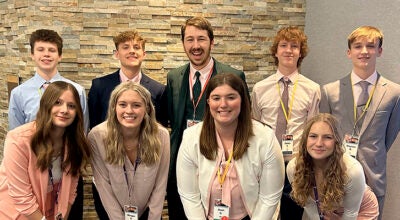Workgroups help college look ahead
Published 10:31 am Friday, August 9, 2013
By Adenuga Atewologun, Riverland president
In November 2012, Minnesota State Colleges and Universities Chancellor Rosenstone asked MnSCU students, faculty, staff, presidents and trustees to participate on three workgroups to advise the long-term strategic directions needed to ensure access to an extraordinary education for all Minnesotans; to meet Minnesota’s workforce and community needs; and to deliver the most cost-effective, highest value education.
For several months, each workgroup met regularly to assess the questions posed. Workgroup members were asked to serve as a steward of our colleges and universities, not as a representative of a particular constituency. Collectively, the group brought an array of perspectives to discussions and a willingness to think boldly and innovatively about MnSCU’s future.
The cumulative guidance from the workgroups led to a decision to frame a joint response to the questions posed, around six broad strategic priorities with supporting actionable strategic directions.
Throughout discussions, the workgroups broadly endorsed the perspective that we must strive to function less like autonomous institutions and more like a coordinated system of colleges and universities to ensure our competitiveness, effectiveness and relevancy in the years ahead. This bold shift from business as usual to a new way of working together towards these common objectives will require an intentional focus on: transformational change management, new competencies and developing a greater understanding of advancing technologies for our students, faculty, staff and leadership.
The resulting report, “Charting the Future” presented is preliminary and released with hope for broader consultation and dialogue among all constituencies before the final report is delivered to the chancellor Oct. 23.
The recommended guiding principle for these discussions: Transform MnSCU to better meet the needs of our students, our community partners and our state by forging deeper collaborations among our colleges, universities and system office, and fully leveraging our collective strengths, resources and human capital.
The report’s six recommended strategic priorities are:
1. Better align our program offerings and services to state, workforce and learner needs by developing and implementing a statewide academic plan and a statewide master facilities plan.
2. Certify the competencies our graduates have mastered.
3. Increase access to our colleges and universities and accelerate the educational success of diverse students.
4. Create a comprehensive, statewide e-education strategy.
5. Deliver leading edge continuing education and customized training to students and employers through statewide collaboration.
6. Enable recommended strategic priorities to be realized by redesigning the system’s financial and governance model.
To view the supporting actionable strategic directions for each area I encourage you to view the full report, available at www.mnscu.edu.
Locally, we need to continue the conversation about the preliminary report and our roles to best serve our students, partners and communities across the region.
I was pleased to learn Riverland has already begun engaging in shared services to reduce costs. For example, Riverland participated with several colleges to combine payroll services for annual college savings of nearly $75,000.
I encourage more conversations and am anxious to hear more innovative and exciting ideas of how Riverland can better serve our region.





